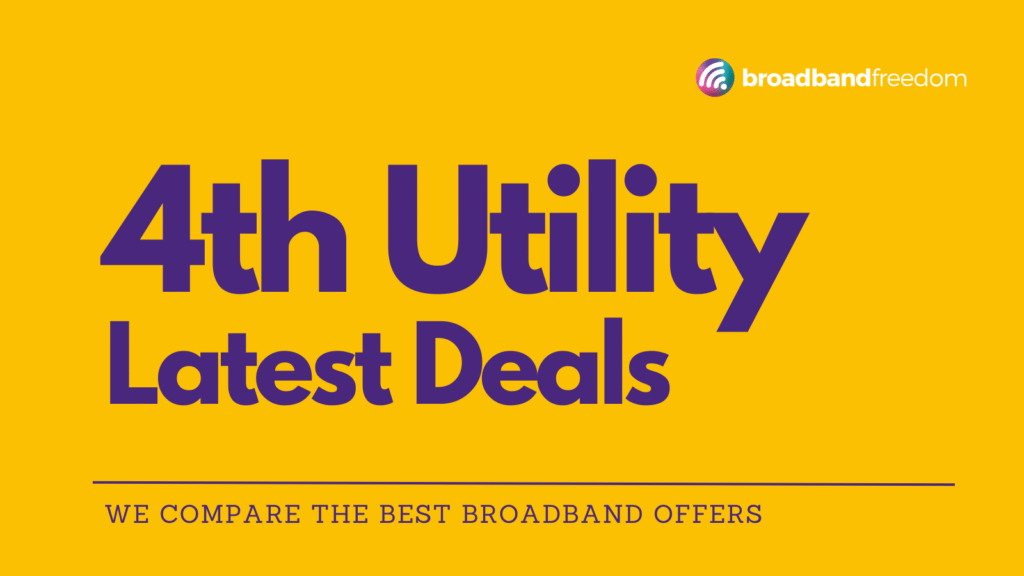
Understanding 4th Utility Broadband
In today’s digital age, connectivity has become as essential as water, electricity, and gas. The idea of 4th Utility Broadband is a new way to think about internet services.
It treats broadband like a basic utility. This notion underscores the importance of reliable and ubiquitous internet access, framing it as a necessity for modern living. Unlike traditional internet services, which people often see as extras, 4th utility broadband is essential for daily life.
The idea of broadband as a 4th utility comes from our increasing need for internet access. We rely on it for many tasks, like banking, healthcare, education, and entertainment.
As the world becomes more connected online, the need for fast and reliable internet has grown. This change affects how we see and provide internet access. With this shift, broadband connection is no longer a luxury but a critical component of infrastructure.
Adopting 4th utility requires us to reimagine how we deliver and integrate full fibre broadband services into our environments. This means making sure all homes and businesses can access high-speed internet.
This access should be like other essential utilities. By focusing on this approach, communities can close the digital gap. This way, everyone can benefit from the chances the digital world provides.
The Evolution of Connectivity
The journey of internet connectivity has been nothing short of revolutionary. Reflecting on its evolution, we see significant milestones that have dramatically altered how we interact with the digital realm. We have moved from slow dial-up connections to fast fibre optic networks via fibre optic cabling. Each step has improved our internet average speeds and digital experiences.
Initially, the internet was a luxury, with limited access and speed. As technologies advanced, broadband services emerged, offering faster and more reliable connections. This change set the stage for today’s 4th utility broadband. It promises better access, broadband speeds and integration into our daily lives.
The shift towards 4th utility broadband highlights the growing expectation for connectivity to be seamless and ubiquitous. As more devices and services require internet access, the demand for robust infrastructure that supports these needs has intensified. By recognising broadband as a utility, we are better equipped to meet these demands and prepare for future advancements.
Key Features of 4th Utility Broadband
When examining the key features of 4th utility broadband, several pivotal elements stand out. Foremost among them is the commitment to providing consistent and high-speed internet access to all, regardless of location. This feature makes sure that both urban and rural areas can enjoy the same quality of service, such as upload speed. This helps promote fairness in digital access for home broadband.
Another significant feature is the integration of smart technologies that enhance user experience. 4th utility broadband often incorporates advanced technologies such as fibre optics and wireless networks, which facilitate faster data transmission and greater reliability. These enhancements support a wide range of applications, from streaming and gaming to tele-communications and remote learning.
Moreover, the 4th utility services exhibit being able to adapt and scale internet speeds. As the need for connectivity and faster broadband grows, these services expand and change. They will support new technologies and more users. This flexibility ensures that the infrastructure remains relevant and effective in the face of rapid technological advancements.

The Importance of 4th Utility in Modern Life
The integration of 4th utility broadband into modern life has profound implications. In an era where digital connectivity underpins almost every aspect of our daily routines, ensuring reliable internet access is crucial. Good Broadband connection is important. It helps people work from home and access information and services easily.
For businesses, 4th utility broadband is a game-changer. It provides the necessary infrastructure to support cloud computing, extensive data analytics, and other digital operations critical to being competitive in today’s market. This connectivity empowers businesses to innovate and expand, driving economic growth and development.
On a personal level, 4th utility broadband enriches lives by expanding access to educational resources, healthcare services, and more. It enables individuals to engage with digital platforms, enhancing both personal and professional development. By recognising broadband as a utility, we acknowledge its vital role in fostering a connected and informed society.
How 4th Utility Broadband Enhances Remote Work
In recent years, remote work has become increasingly prevalent, requiring robust connectivity solutions. Broadband is important in this change. It provides the speed and reliability needed for smooth remote work. With fast internet and mobile broadband, employees can join virtual meetings, work on projects, and access resources easily.
The advantages of 4th utility broadband extend beyond mere connectivity. It also provides enhanced security features that protect sensitive data and communications. This is particularly important for remote work, where employees often access company networks from various locations. Ensuring that these connections are secure helps maintain data integrity and keeps work confidential.
Furthermore, as remote work becomes more entrenched, the flexibility offered by 4th utility broadband becomes increasingly valuable. With its support for many devices and high bandwidth, employees can have a more productive and efficient work environment. This flexibility not only benefits individual workers but also contributes to overall organisational success.

The Impact on Smart Cities and IoT
Advancements in connectivity technologies have helped the rise of smart cities and the Internet of Things (IoT). Broadband growth is key to these developments.
It provides the base for connected systems that improve city life. This broadband approach supports many IoT devices, like smart meters and traffic management systems. This helps cities run more efficiently.
One key benefit of in smart cities is data collection. It allows for the gathering of large amounts of data. You can then analyze this data for various purposes.
This data-driven method helps make better decisions and use resources wisely. It improves things like public transport and energy use. As a result, cities can become more sustainable and responsive to the needs of their inhabitants.
Moreover, 4th utility broadband supports the development of smart infrastructure, which is crucial for the future of urban planning. By adding connectivity to city design, we can create places that are both more efficient and more livable. This integration is essential for realising the full potential of smart cities and IoT.
Comparing 4th Utility with Traditional Internet Services
When comparing 4th utility broadband with traditional internet services, several distinctions emerge. Traditional services often rely on outdated infrastructure, which can limit speed and reliability. In contrast, 4th utility full fibre broadband utilises cutting-edge technologies that deliver superior performance and resilience.
A key difference lies in how you access each service. Traditional internet provision / internet services can be uneven, with rural areas frequently experiencing limited access and slower speeds. 4th utility broadband addresses these disparities by offering equitable access for all, regardless of location.
Additionally, 4th utility broadband is able to adapt with changing demands and technological advancements. Traditional services may have trouble keeping up with new ideas.
The 4th utility model changes and grows. This ensures that connectivity stays strong and ready for the future. This ability to change is crucial for meeting the needs of an increasingly digital world.
Real-world Applications of 4th Utility Broadband
The practical applications of 4th utility broadband are vast and varied, influencing numerous sectors. In education, high-speed internet allows remote learning and access to digital resources. This helps connect students and teachers. This connectivity proves particularly valuable in underserved areas, where traditional educational resources often remain limited.
In healthcare, 4th utility broadband facilitates tele-medicine, allowing patients to consult with healthcare professionals remotely. This capability is especially beneficial for individuals in rural or isolated areas, providing them with access to medical expertise that might otherwise be unavailable. By supporting telehealth initiatives, broadband as a utility enhances healthcare delivery and outcomes.
The entertainment industry also reaps significant benefits from 4th utility broadband. Consumers can stream high-definition content and play online games without lag. This gives them a richer and more immersive experience. This enhanced connectivity supports the growth of digital media and paves the way for innovative content delivery methods.
Future Trends in Connectivity
As we look to the future, several trends in connectivity are poised to shape our digital landscape. One trend is the growth and improvement of 4th utility broadband. This will be important for new technologies like 5G and more. These advancements promise even faster speeds and more reliable connections, further integrating the digital and physical worlds.
Another trend is the increasing importance of cyber-security in the realm of connectivity. As more devices and services become inter-connected, protecting sensitive data and networks will be paramount. Fourth utility broadband providers must focus on security measures. This will help protect users and keep trust in digital services.
Smart infrastructure and IoT will keep increasing the need for strong connectivity solutions and broadband options. As cities and communities work to be smarter and more sustainable, the need for reliable broadband will grow. Embracing these trends will be key to unlocking the full potential of digital transformation.
Conclusion: Embracing the 4th Utility Revolution
In conclusion, the rise of a 4th utility changes how we see and use internet connectivity. By seeing broadband as a basic utility, we can make sure everyone has access to the fastest broadband. This will help in many ways that connectivity improves our lives. From enhancing remote work to powering smart cities, the implications of this revolution are far-reaching.
As you think about how broadband affects your life, it’s good to look at the latest 4th utility broadband services. By staying informed and using these new tools, you can take part in the digital economy. This way, you can enjoy the many benefits of easy connectivity.
Call to Action
View their latest offers today and discover how 4th utility broadband can transform your connectivity experience. Embrace the future of internet services and unlock the potential of a truly connected world.
For the latest broadband offers, save money and switching broadband visit here.
See how Broadband Freedom can help you, click here to check your postcode
